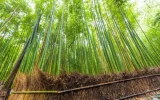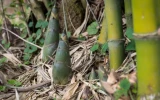Is Growing Bamboo Good for the Environment? (11 Benefits)
Growing bamboo offers major environmental benefits, as some types can grow up to 35 inches in just one day. This fast growth makes bamboo a very renewable source and helps fight climate change by absorbing carbon dioxide and releasing 35% more oxygen than similar-sized areas of trees. Let's dive into the multifaceted environmental benefits of bamboo cultivation.
Growing bamboo is environmentally beneficial due to its rapid growth rate, effective carbon dioxide absorption, and oxygen production. It improves soil quality, prevents erosion, and requires minimal water. Bamboo forests also support biodiversity and promote a more sustainable forestry industry.
While wood has been the go-to for building for ages, bamboo has been stepping up as the eco-hero we might not have expected. Let's take a closer look at how bamboo offers a compelling sustainable alternative to other common building materials.
Summary
- Bamboo acts as a highly efficient carbon sink, significantly reducing the overall carbon footprint by rapidly absorbing CO2, which aids in combating climate change.
- Bamboo's extensive root system prevents soil erosion, stabilizes landscapes, and supports biodiversity by creating habitats for various species, contributing to ecosystem health.
- Bamboo serves as a sustainable alternative to plastics and other materials, requiring less water, fertilizer, and pesticides, thereby minimizing environmental impact and promoting eco-friendly products.
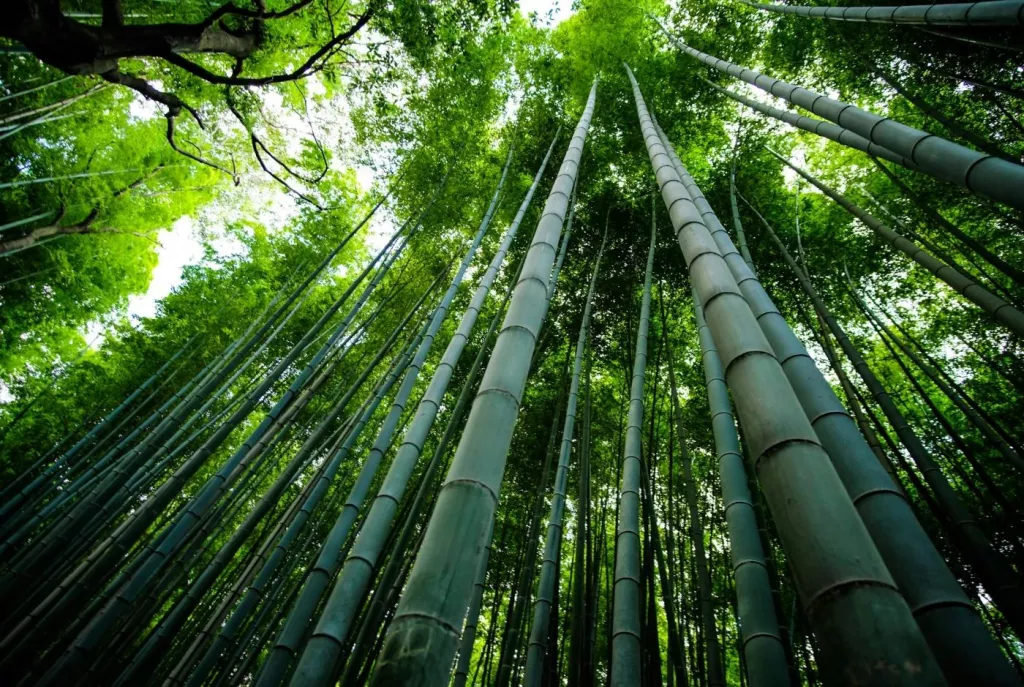
On this page:
- It Helps in Carbon Sequestration
- It Aids in Soil Erosion Prevention
- It Supports Biodiversity and Habitat
- It Helps Conserve Water
- It Provides a Sustainable Alternative to Plastics and Other Materials
- It Requires Low Fertilizer and Pesticide Requirements
- It Contributes to Noise Reduction
- Planting It Results in Minimal Waste
- It Can Be Transformed Into Biofuel
- It Improves Soil Health
- It Enhances Water Quality
| Environmental Benefits of Bamboo | How Bamboo Contributes |
|---|---|
| Carbon sequestration | Bamboo absorbs a lot of CO2 from the air, helping reduce climate change. |
| Soil erosion prevention | Bamboo's roots hold soil in place, stopping it from washing away and reducing landslides. |
| Biodiversity and habitat | Bamboo provides homes for many animals and plants, helping more species live together. |
| Water use and conservation | Bamboo needs less water than other plants, saving water resources. |
| Sustainable alternative to plastics and other materials | Bamboo can replace plastics and other materials, making products that are better for the Earth. |
| Low fertilizer and pesticide requirements | Bamboo grows well without much fertilizer or pesticide, reducing pollution. |
| Noise reduction | Bamboo can block sound, making places quieter. |
| Minimal waste | Bamboo produces very little waste because all parts of it can be used. |
| Energy production | Bamboo can be turned into energy, providing a cleaner alternative to fossil fuels. |
| Soil health improvement | Bamboo's leaves enrich the soil, making it better for growing things. |
| Improves water quality | Bamboo helps clean water by absorbing extra nutrients from it. |
It Helps in Carbon Sequestration
When you plant bamboo, you're actively participating in carbon sequestration. This is the process where bamboo absorbs carbon dioxide, a significant greenhouse gas, from the atmosphere during photosynthesis.
The ability of bamboo to sequester carbon helps in combating climate change by reducing the overall carbon footprint.
Bamboo is one of the most efficient natural carbon sinks. Here's why:
- Fast growth: Bamboo can grow over a meter in a single day, allowing it to absorb carbon dioxide quickly.
- High biomass: Due to its rapid growth rate, bamboo achieves high biomass, which translates to more carbon absorption.
- Carbon storage: Not just the foliage, bamboo stores carbon in its roots and rhizome networks beneath the soil.
The carbon-negative impact
By cultivating bamboo, you can help create a carbon-negative effect. This means that bamboo plantations can absorb more carbon dioxide than they emit over time.
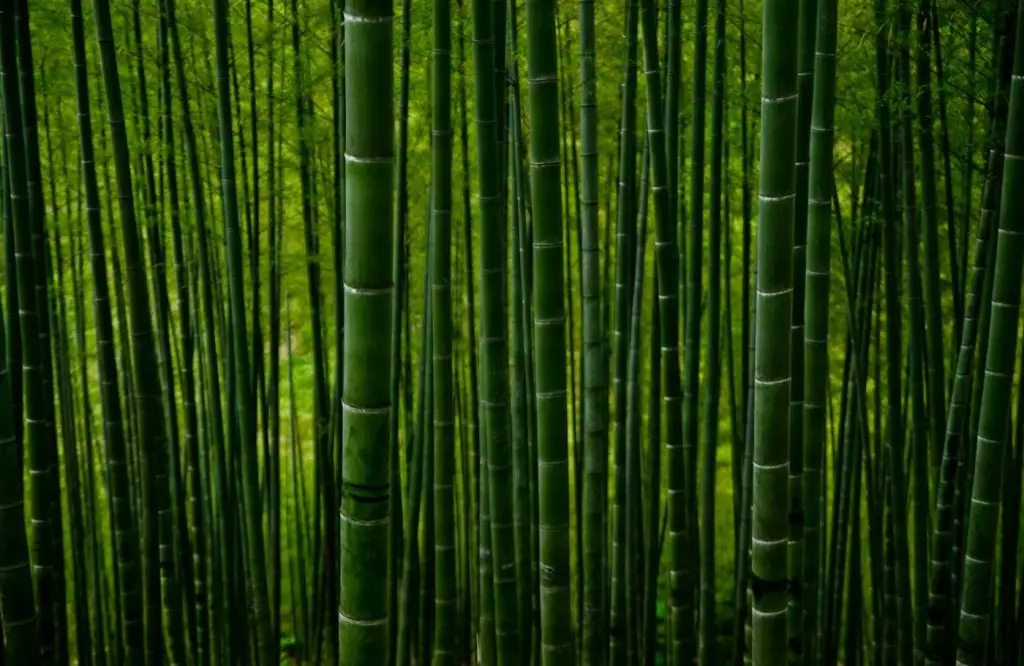
As a versatile plant, bamboo serves multiple functions while enhancing carbon sequestration. Here's a simple breakdown of its benefits:
- Absorbs more CO2 than some hardwood trees
- Can be harvested repeatedly, which sustains its role as a carbon sink
- Versatile use ensures continued growth and carbon capture without deforestation
It Aids in Soil Erosion Prevention
Bamboo might just be your ally in combating soil erosion. This grass, with a wood-like stem, has a remarkably efficient root system that binds the soil together, creating a natural barrier against the powerful forces of water and wind.
If you're managing land, especially in arid regions or places prone to degradation, planting bamboo can be a significant form of soil protection.
- Root system: Bamboo's roots extend horizontally and form a dense network that holds soil particles snugly, reducing the likelihood of erosion.
- Soil consolidation: In vulnerable locations like slopes and banks, bamboo roots fortify the ground, making it more stable and less prone to landslides.
Bamboo groves are not just functional; they can also bring a lush, green look even to arid landscapes. Your plantation will not only look good but also provide substantial environmental benefits.
The grass's penchant for soil conservation is particularly vital in areas where the land has been stripped of much of its natural vegetation and is thereby at risk of rapid erosion.
When you introduce bamboo into an ecosystem, you're setting up an erosion control measure that works year-round.
Through rain or shine, bamboo's roots continue to knit the soil tightly beneath the surface. As a result, water has a more challenging time washing away the surface, and your land remains intact.
It Supports Biodiversity and Habitat
Bamboo forests are home to an incredible variety of life. When you think of bamboo, it's not just about the plants themselves, but also about the countless species they support.
From tiny insects to larger mammals like the giant panda, these forests are bustling with activity. Bamboo offers a renewable resource that grows rapidly, making it a sustainable alternative to slow-growing trees.

The role bamboo plays in maintaining an ecosystem is vital. With deforestation being a global concern, the introduction and replanting of bamboo can create a positive impact.
Bamboo regrows quickly after harvesting without the need for replanting, covering bare land, and helping to restore lost habitats. It is not only about preserving what we have but also about recovering what has been lost.
Your choice to support bamboo cultivation can contribute to increased biodiversity.
Each species of bamboo has the potential to form complex habitats. These habitats benefit not just the individual species that live there, but the entire ecosystem.
It Helps Conserve Water
When you choose to grow bamboo, you’re opting for a plant that is remarkably efficient with water. Bamboo requires less water than many plants, including cotton, which is immensely beneficial in areas with limited water resources.
The deep and extensive root system of bamboo is another perk, as it not only helps to prevent soil erosion, but also stabilizes riverbanks and reduces water runoff.
This means that during rain, more water stays in the ground where it can be used rather than being lost. It's a smart way to maintain the health and stability of your local ecosystem.
It Provides a Sustainable Alternative to Plastics and Other Materials
In this section, you'll discover how bamboo is transforming product sustainability through eco-friendly furnishings, lifestyle products, and sustainable living solutions.
Bamboo has eco-friendly furnishing
Bamboo's rapid growth rate and minimal requirement for pesticides make it an environmentally sustainable choice for furniture and flooring.
It's a smart material for eco-friendly furnishing because it reaches maturity quickly and does not contribute significantly to deforestation.

Bamboo in lifestyle products
The versatility of bamboo extends to lifestyle products like clothing, toothbrushes, and kitchen utensils. These products offer the dual benefits of durability and sustainability.
Bamboo's ability to grow without heavy use of pesticides or fertilizers and its ease of manufacturing make it a go-to material for sustainable living products.
Bamboo offers a solution for sustainable living
Bamboo offers solutions for sustainable living by promoting reforestation and poverty alleviation. The production and management of bamboo can provide income to rural areas, aiding in the fight against poverty.
Comparing bamboo with other materials
In this section, let's discuss how bamboo stands up against other common materials.
Sustainability of wood vs bamboo
Wood has been a fundamental building and manufacturing material for centuries. However, bamboo offers a compelling sustainable alternative.
Bamboo can grow to full size in just three to five years, far quicker than hardwoods which can take several decades. This rapid growth makes bamboo a highly renewable resource.
Additionally, bamboo does not require replanting after harvesting, reducing the impact of deforestation and helping to maintain a healthier ecosystem.
Paper and plastic alternatives
The push for a reduction in plastic waste has led to a rise in sustainable products made from bamboo. Your choice to use bamboo-made items such as utensils, straws, or toilet paper not only decreases plastic waste but also lessens the environmental impact associated with paper production.
Thanks to its strength and durability, bamboo stands out as an environmentally friendly alternative that caters to a variety of uses while contributing less to greenhouse gases.
Building material impact
In the construction industry, building materials like steel and hardwoods are staples for their strength and longevity, but they come with a significant carbon footprint.
Bamboo, on the other hand, has surprising tensile strength and flexibility, making it a viable choice for housing and construction, particularly in climates prone to earthquakes.
The growing popularity of bamboo eliminates substantial greenhouse gas emissions from the production processes of conventional building materials, reinforcing bamboo’s credentials as a game changer in reducing environmental impact.
It Requires Low Fertilizer and Pesticide Requirements
When you choose to cultivate bamboo, one of the most compelling advantages is its minimal need for fertilizers and pesticides.
Bamboo is inherently resistant to pests, so you won't face the common challenges that many other crops endure. This means less reliance on chemical treatments, which is better for the environment.
- Reduced chemicals: Bamboo’s pest resistance translates to fewer chemicals in the soil and water.
- Less runoff: With fewer chemicals needed, there’s less risk of harmful runoff polluting nearby ecosystems.
- Healthier soil: The absence of harsh fertilizers means maintaining more natural soil health.
In your bamboo garden, you'll appreciate that it thrives with minimal intervention. Due to its robust nature, bamboo can grow in a variety of soil conditions, often without the boost from fertilizers that other crops might require.
This keeps the soil in better condition and supports a healthy, balanced ecosystem around your bamboo plants.
It Contributes to Noise Reduction
When you plant bamboo in your garden, you're not just adding greenery; you're installing a natural sound barrier. Its dense growth helps to mute urban noise, creating a more tranquil environment.
The thick cluster of stalks and leaves capture and diffuse sounds. Think of it as nature’s way of helping you find peace in noisy places. By choosing bamboo, you're opting for one of the most effective plants for dampening unwanted noise.
For optimal noise reduction:
- Plant clumping bamboo: This variety grows tightly together and is better for creating a dense screen.
- Maintenance tips: Regularly trimming your bamboo ensures it stays healthy and continues to provide noise-canceling benefits.
Neighbors down the block with loud gatherings? Bamboo can help reduce that disturbance, making your outdoor spaces quieter and more enjoyable.
Planting It Results in Minimal Waste
When you choose bamboo, you're embracing a plant that naturally reduces waste. Bamboo can be used entirely, from the roots to the shoots. This complete usage means fewer leftovers to manage.
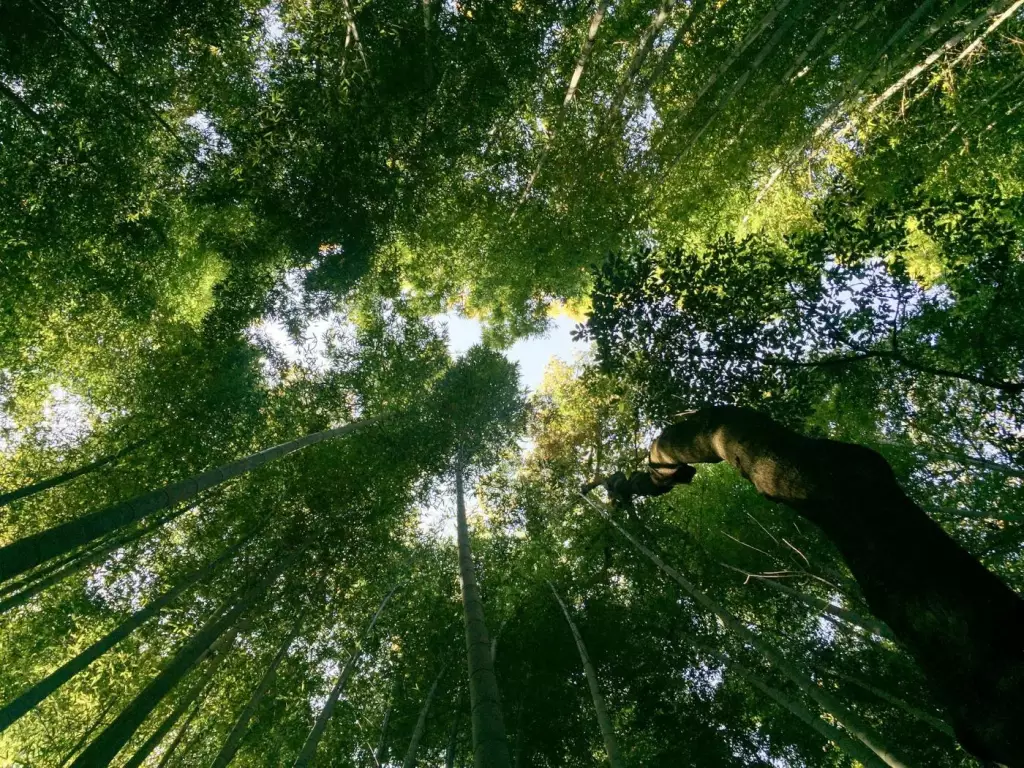
For instance, the leaves of bamboo plants, which are often discarded in other crops, serve as natural mulch or fodder. The fibers, considered by-products in some industries, are valuable for making textiles or composites.
Here's a quick breakdown of bamboo's waste efficiency:
| Part of Bamboo | Use |
|---|---|
| Roots | Soil enrichment and stability |
| Culms (stems) | Building materials, furniture, utensils |
| Leaves | Livestock feed, compost |
| Shoots | Edible and nutritious food source |
| Fibers | Clothes, paper, or crafts |
In contrast to many other crops or materials, bamboo's growth pattern and versatility mean that almost nothing is left unused.
Plus, with its capability to regenerate quickly after harvest, the cycle of use can continue with minimal environmental impact. This efficiency supports a sustainable and eco-conscious lifestyle that you can feel good about.
It Can Be Transformed Into Biofuel
Bamboo can be transformed into biofuel, and studies suggest that pairing the right species with the proper production methods can maximize its benefits.
This makes bamboo not just a plant you can enjoy aesthetically, but a contributor to sustainable energy solutions.
Bamboo's rapid growth rate is pivotal. Imagine a plant that can reach its full height in merely a quarter of a year—this is bamboo for you. Its quick turnover allows for *consistent harvesting, which in turn provides a steady supply of raw material for bioenergy.
The process of converting bamboo into biofuel
The conversion of bamboo into biofuel primarily involves two processes: biochemical conversion and thermochemical conversion.
Biochemical conversion
This process uses enzymes and microorganisms to break down the cellulose and hemicellulose components of bamboo into sugars, which are then fermented into ethanol, a type of biofuel. This method is similar to the process used in producing biofuel from corn or sugarcane.
Thermochemical conversion
This method involves the application of heat and chemical processes to convert bamboo into biofuel. There are several techniques under this category, including gasification, pyrolysis, and direct liquefaction.
- Gasification converts bamboo into syngas (a mixture of hydrogen and carbon monoxide) through a reaction at high temperatures with a controlled amount of oxygen.
- Pyrolysis, on the other hand, decomposes bamboo at high temperatures in the absence of oxygen, producing bio-oil, which can be further refined into biofuel.
- Direct liquefaction converts bamboo into bio-oil through the application of heat and solvents.
By engaging with bamboo as an energy source, you support an eco-friendly alternative to fossil fuels. Your role in growing and using bamboo helps leverage a resource that's not only abundant but replenishes itself rapidly, standing out in the realm of renewable energy sources.
It Improves Soil Health
Growing bamboo offers significant benefits for soil health. Bamboo roots are great for reducing soil erosion. They hold the soil together, maintaining its structure and preventing loss of topsoil to wind and water.
Bamboo can improve the soil's fertility. The fallen leaves and sheaths from bamboo plants decompose, enriching the soil with organic matter. This process enhances soil structure and increases water retention, facilitating better plant growth.
Here's a brief outline of how bamboo interacts with the soil:
- Erosion control: Bamboo roots form a network that reinforces soil.
- Soil fertility: Decaying bamboo matter returns nutrients to the soil.
- Water retention: Improved soil structure helps in holding moisture.
Moreover, bamboo does not require intensive agricultural practices. You’ll appreciate its ability to thrive with minimal nutrient inputs, reducing the need for chemical fertilizers. Because of this, bamboo is often praised for its role in soil health and erosion control.
Embrace bamboo as your eco-friendly ally in the garden, and witness its gentle yet powerful impact on preserving and enhancing your soil's health.
It Enhances Water Quality
When you cultivate bamboo, you're also supporting water purification. This plant has a knack for absorbing heavy metals from water due to its high growth rate and extensive root system. In simpler terms, bamboo acts as an environmental vacuum cleaner for your waterways.
You'll find that bamboo's root structure can prevent sediment runoff, keeping rivers, lakes, and streams clearer. This is crucial in maintaining the delicate balance of aquatic ecosystems.
Clearer water doesn't just look better; it supports healthier underwater life and improves the quality of water for everyone.
What's more, bamboo can help in phytoremediation, a process where plants decontaminate the environment. By introducing bamboo into affected areas, it can aid in cleaning up pollutants from water. So you're not just planting a star for the environment; you're actively participating in water purification.


